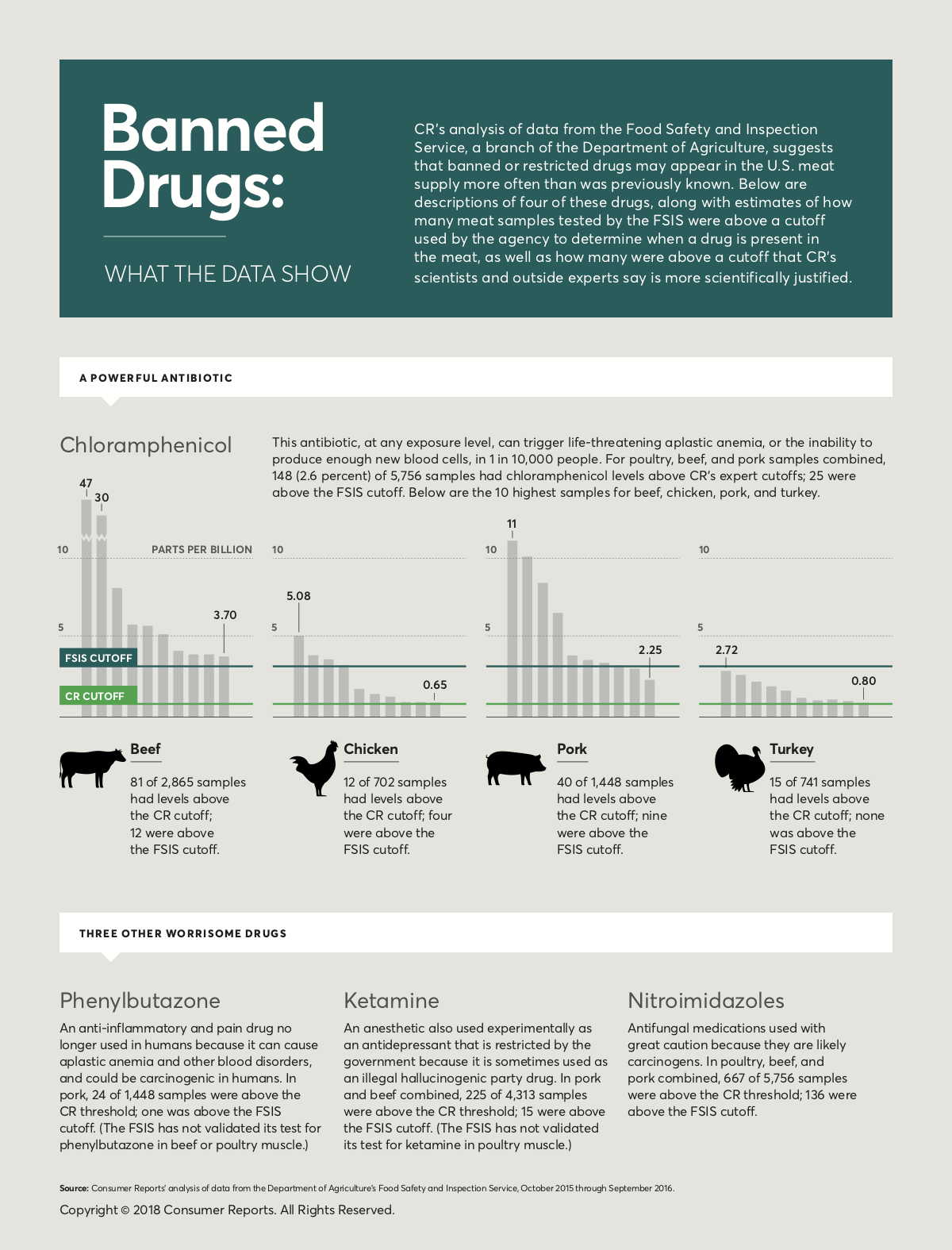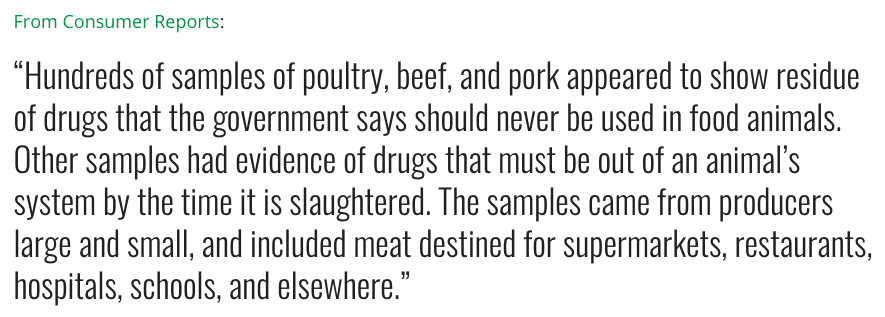Food & Water Watch: Hallucinogenic Found In Meat, But The USDA Isn’t Taking Action
When banned drugs are found in random samples of meat, you would hope it would trigger an investigation of how the drugs are getting there. Instead, the USDA has been refusing to act. Why?
A hallucinogenic drug, an anti-inflammatory unapproved for human use, and a potent antibiotic with potentially life-threatening side effects have been detected in U.S. meat supplies, along with several other restricted substances. These results were uncovered in a set of data that it seems the U.S. Department of Agriculture (USDA) didn’t intend to make public. Now the USDA has released a new set of data claiming that it trumps the original, but experts like those at Consumer Reports aren’t buying it.
How The Data Was Collected
The USDA’s Food Safety and Inspection Service (FSIS) randomly tested nearly 6,000 samples of meat between 2015 and 2016. The samples were gathered at slaughterhouses nationwide and sent to labs for testing by the newest devices that can measure dozens of compounds at once, and are able to detect them in more minute doses than they could in the past — down to parts-per-trillion rather than parts-per-billion.
Then, food safety organizations submitted a Freedom of Information Act request as a result of a lawsuit against one of the nation’s largest poultry factory farms, Sanderson Farms. The data sets were released, and questions began rolling in from Consumer Reports’ analysis. FSIS claimed the data should not have been released, and that a new dataset based on a complicated new baseline should be used instead. Food safety experts see this as a pretense to avoid an investigation. Watch the video:
What Was In The Meat Is Concerning

How Do Drugs Like That Get Into Meat?
This is exactly the question that needs more investigation. There are a variety of possibilities, from contamination of the water the animals drink to misuse of these substances in the raising of the animals. But an investigation won’t happen until the USDA acknowledges that the data warrants it. Food safety advocates like Food & Water Watch and Consumer Reports are working to bring enough attention to the problem to pressure the FSIS to act. Once the cause is known, we can work on advocating for a solution — but it all starts with FSIS deeming this a problem worth exploring.
The USDA should stop hiding the facts about what is in the meat people feed their families. Consumers have a right to know what the drug residue sampling program found, not just get a sanitized version of what the USDA wants them to see. That’s why we are posting the original data set here. Download the files above to see the difference between the original files and the edited versions the USDA released, and share this so your friends and family get informed, too.


